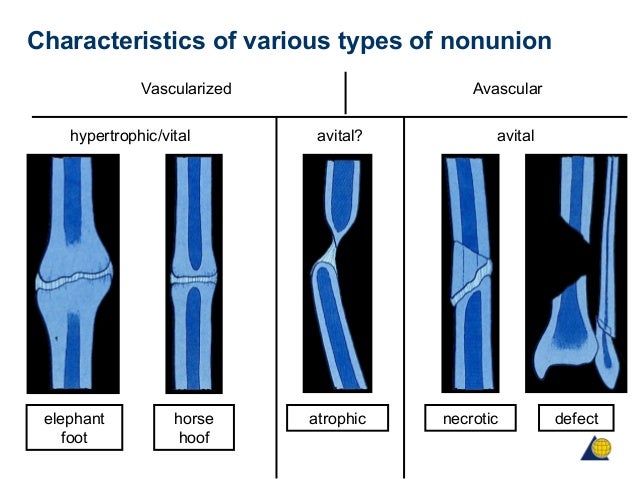- Laboratory and clinical scientists and practicing clinicians need definitions of union, delayed union, and nonunion. Fracture union is a gradual process, so quantitative measures are the most meaningful. However, end point definitions also are useful, but they need empirical validation.
- Fracture: Nonunion Fundamentals Every fracture carries the risk of failing to heal and resulting in a nonunion. While nonunions can occur in any bone, they are most common in the tibia, humerus, talus, and fifth metatarsal bone. Several factors contribute to a nonunion.


Only two-thirds of nonunion workers have health insurance from work compared with 94% of union workers. And, 86% of unionized workers can take paid sick days to care for themselves or family members, compared with 72% of nonunion workers. These are discrepancies that translate to real day-to-day hardships for millions of American families.
Fracture non-union describes the failure of normal fracture healing processes. Solid bone healing will not occur without further treatment intervention.
Nonunion Fracture Treatment

Pathology


There is no consensus definition in the radiology or orthopedic literature, however, FDA (USA) defines it as a fracture with a minimum of at least nine months since the initial injury with no signs of healing for the final three months 1.
Radiographic features
There are different types of fracture non-union with various imaging characteristics:
- hypertrophic: abundant callus formation; radiolucent line (unmineralized fibrocartilage) at the nonunion site
- oligotrophic: little or no callus formation; diastasis at the fracture site
- atrophic: bony surfaces partially resorbed; no callus formation; osteopenia; sclerotic avascular bone segments; segmental bone loss
- infected: osteolysis; osteopenia; sclerotic avascular bone segments; segmental bone loss
- synovial pseudarthrosis: variable appearance (hypertrophic, oligotrophic, or atrophic)
Location
See also
- 1. United States Food and Drug Administration (USFDA), Office of Device Evaluation, Guidance Document for Industry and CDRH Staff for the Preparation of Investigational Device Exemptions and Premarket Approval Application for Bone Growth Stimulator Devices, 1988.
Promoted articles (advertising)
When you suffer a bone break or fracture, you probably do not think about the injury not healing correctly. However, if you seek subpar care, that is precisely what happens. That is why if you suffer from an injury such as this, you shouldn’t wait to contact our team at Advanced Orthopedics & Joint Preservation. By working with our Brooklyn orthopedist, we’ll prevent a nonunion and help you regain full strength.
Nonunion Fx
What Is A Nonunion?
Although this is not a phrase familiar to many, anyone who suffers from a bone break or fracture needs to be aware of this problem. A nonunion takes place when a broken bone fails to heal. In some cases, even after surgical and nonsurgical procedures, healing does not occur. However, it serves as your best bet when working with our Brooklyn Orthopedist and preventing this from happening.
Risk Factors of Nonunions
When it comes to nonunions, there are various risk factors to be aware of. Knowing what they are should encourage you to seek proper care after suffering from this type of injury. By coming to our orthopedist first, you increase the odds of avoiding a nonunion and allowing your bone to recover fully. Examples of these risk factors include:
- Tobacco or nicotine use.
- Being of an older age.
- Vitamin B deficiency.
- Severe anemia.
- Diabetes.
What Is Needed For Proper Bone Healing
For the bone to properly heal, several things need to take place. Our Brooklyn orthopedist understands this and will work diligently to foster an environment that allows for proper bone healing. Certain factors go into this, which include the below:
- The broken bones must be placed back into the correct position and held there in a stable manner.
- Restoring blood flow at the site of the injury.
- Having patients intake enough protein, calcium, vitamin C, and vitamin D.
Contact Our Brooklyn Orthopedist
Those who have suffered from a broken bone will find that surgical procedures and immobility through casting are often the best options. However, having an under-qualified medical staff perform these acts will do more harm than good. If you want to avoid a nonunion, we recommend you consider working with our Brooklyn Orthopedist at Advanced Orthopedics & Joint Preservation. For more information on how we can help, be sure to contact our team today.
